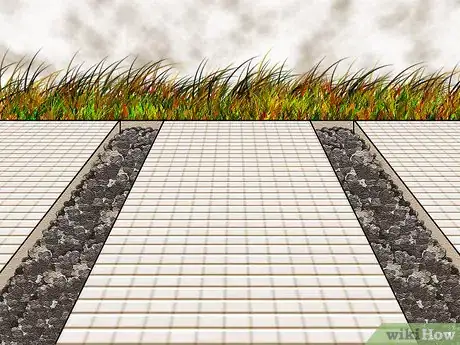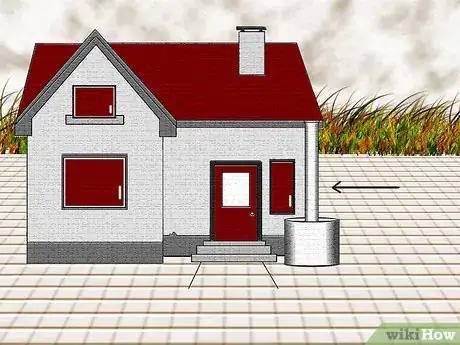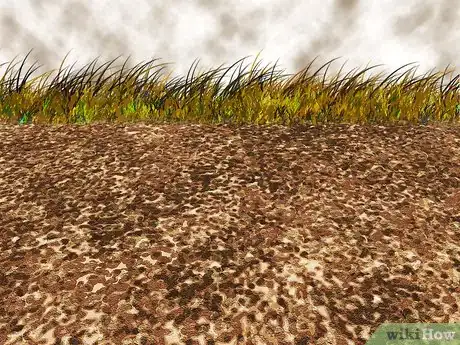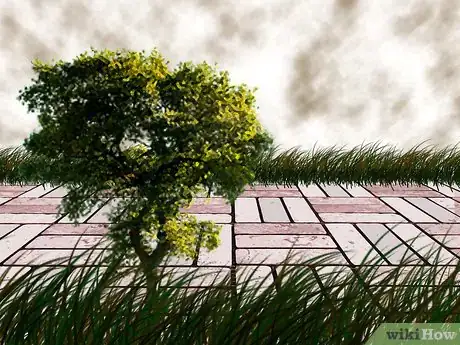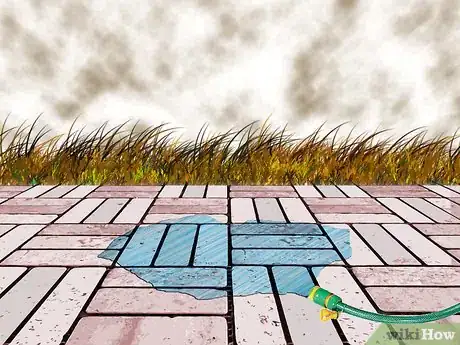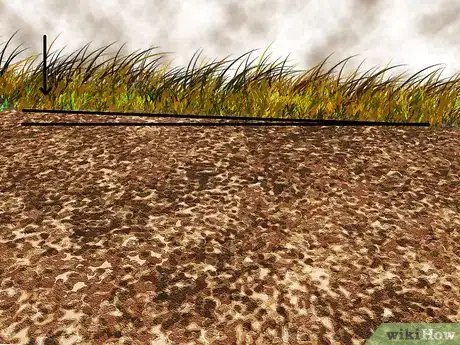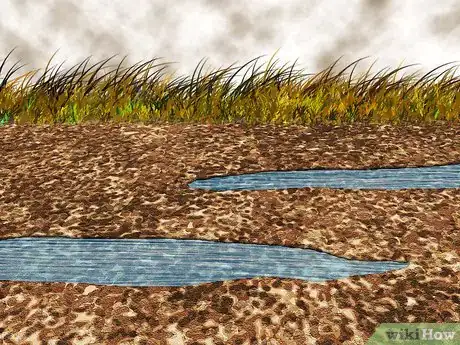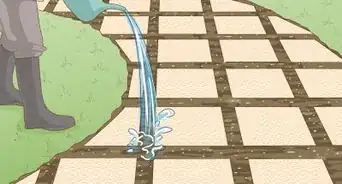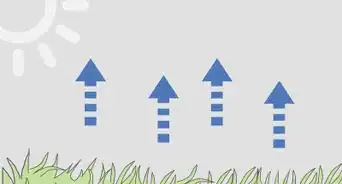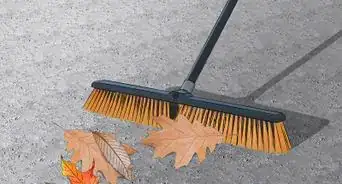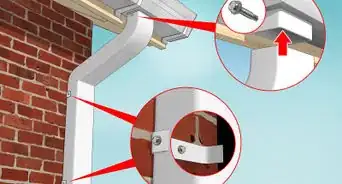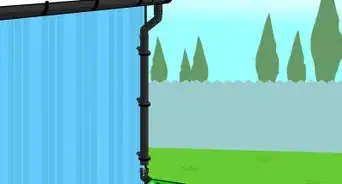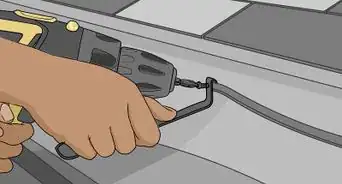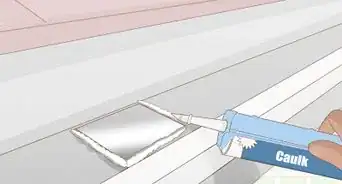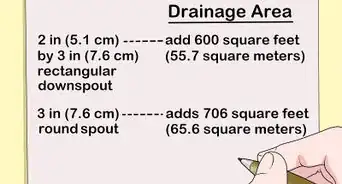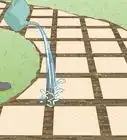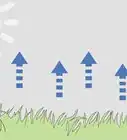This article was co-authored by Matt Daly. Matt Daly is a Landscape Designer and the Founder of Water & Earth Landscape Design, which is based in both Richmond, Virginia, and San Jose, California. With nearly 10 years of experience, he specializes in designing outdoor living spaces, including patios, pools, and fireplaces. Matt also runs a blog where he educates homeowners about landscaping topics: https://www.liveinyourbackyard.com/. He earned his Landscape Design & Horticulture Certification from The University of Richmond, where he also studied Sustainable Landscape Practices.
This article has been viewed 378,942 times.
Storm water runoff is precipitation that does not soak into the ground where it falls. This is one of the greatest threats to water quality in much of the industrialized world. When water runs off yards, streets, and parking lots into storm sewers or directly into waterways, it carries with it sediments that clog streams and reduce oxygen in the water, as well as chemicals that poison aquatic ecosystems and can render water supplies undrinkable. Runoff also contributes to flooding, and because it doesn't recharge groundwater supplies, it exacerbates water shortages in many areas.
As more and more people move to cities and towns, the storm water runoff problem worsens, because the flattened, impervious surfaces and lack of natural vegetation in these environments prevent precipitation from soaking into the ground. While runoff is a problem of immense scale, there are plenty of simple steps you can take to reduce storm water runoff on your own property.
Steps
-
1Minimize impervious surfaces on your property. In nature, most precipitation soaks into the ground where it falls. Plants absorb much of this through their roots, and some makes its way down to the water table, being purified as it gradually percolates through the soil. The "built environment," however, is characterized by impervious surfaces (surfaces that don't absorb water), so that a large portion of rainfall or snow melt becomes storm water runoff. Reducing the amount of impervious surface on your property therefore reduces the amount of runoff.[1]
- Replace concrete or asphalt slabs with pavers. You can use paving stones or bricks for patios, walkways, and driveways. Water can seep down into the spaces between the individual pavers, thus reducing the amount of runoff.
- Take out the center of your driveway. Only the tires of your car touch the ground, so two strips of pavement should suffice for a driveway. You can then plant grass or mulch the center of the driveway, reducing the amount of pavement substantially.
- Replace all or part of your driveway with the kind of pavers shown here. Low plants can even grow up between the openings.
- Replace the pavement at the bottom of your driveway with a French drain or grate. This will collect the water that falls on the rest of your driveway and allow it to soak into the ground, rather than flowing into the and, eventually, into waterways. Installing a French drain with the capacity to take in all the runoff from your driveway can be very expensive, but every little bit helps.
- If an area must be paved, use porous asphalt or permeable concrete, which will allow at least some water to soak into the ground. Keep in mind that the effectiveness of these materials is limited because water tends to run off them before it can permeate them, especially if there's any slope. It's also important to make sure there is a percolation field of permeable ground beneath the pavement.
-
2Line impervious surfaces with gravel trenches. Figure out where water runs off your driveway or patio, and then dig a small trench along the edge. Fill it with gravel to slow the runoff and allow the water to seep into the soil.[2]Advertisement
-
3Use the water that drains off your roof. A 1,000 square foot roof can produce more than 600 gallons (2,271.2 L) of runoff for every 1" of rain that falls on it. If your downspouts are connected directly to a storm drain, disconnecting them is the single most important step you can take to reduce runoff. Instead of allowing water to go directly into the sewer or to run into the street, direct your downspouts toward a vegetated area, such as your garden or lawn. Use extensions to ensure the water comes out at least 5 feet (1.5 m) away from your foundation. Alternatively, install rain barrels or cisterns to collect the water so you can reduce the risk of soggy yards or basement flooding and save some rain for a sunny day. If you don't have any way to make good use of the stored water, consider Dutch drains, gravel-filled barrels with holes at the bottom which slow the flow of water to allow the ground to absorb it all.[3]
-
4Replace lawn areas with native plants. Lawns aren't particularly effective at absorbing and retaining water, especially during heavy rains. This is a problem not only because more natural precipitation runs off them, but also because they may require a lot of irrigation, which in turn can create even more runoff. Native plants, such as shrubs and wildflowers, tend to develop more extensive root systems that take in and hold water much better than lawns. As an added bonus, they require less maintenance than a lawn does. If you do decide to keep your lawn, though, water it efficiently to conserve water and reduce runoff.[4]
-
5Add organic matter to your soil. Adding compost or mulch to your soil can make your plants happier, but it can also reduce runoff. Spread a 2-4" layer of organic material once a year.[5]
-
6Don't leave soil exposed. Depending on your slope and soil type, bare soil can be nearly as impervious as concrete. If you can't or don't wish to plant vegetation on an exposed patch of soil, cover it with mulch, wood chips, or gravel. This is especially important for newly landscaped yards that don't yet have established vegetation.[6]
-
7Plant trees and preserve existing ones. Trees' immense root systems effectively absorb water over a large area. In addition, the canopy of a tree slows the fall of rainwater so that the ground is capable of absorbing larger amounts than it otherwise would be. Plant native trees or trees which take in a lot of water and are well adapted to your environment, and take care of your existing trees. For new home constructions, leave trees in place if possible.[7]
-
8Don't create runoff when washing your car. Bring your car to a car wash (preferably one that recycles its water), or wash your car on your lawn. You can also wash a car without water, if you prefer.[8]
-
9Create a rain garden. A rain garden is a garden, planted in a slight depression in the ground, that collects water and allows it to gradually permeate into the soil. Rain gardens come in many sizes and are typically planted at the base of a slope or even at the outlet to a downspout--anywhere where water naturally flows or can be directed. Water-loving plants and a base of permeable soil enhanced with fertile loam and a topcoat of mulch allow the rain garden to quickly absorb even large amounts of water, usually in just a few hours.[9]
-
10Reduce the slope of your yard. If your yard has a severe slope, the soil will have a hard time absorbing even moderate rains. Consider excavating to make steep slopes more gradual. In order to prevent basement flooding and foundation damage, make sure there is an adequate slope away from the house for at least 10–15 feet (3.0–4.6 m).[10]
-
11Install berms and vegetated swales. A berm is a slightly raised area, while a swale is a ditch with a mild slope. Berms can be used to slow runoff on steep slopes, and swales planted with grass or other plants can direct water to a rain garden. Swales can also direct water toward a storm drain or street: since they significantly reduce the amount of runoff, very little water that enters a vegetated swale will actually make it to the street or drain.[11]
- A berm does not need to be strictly soil. You can put larger organic material in there to fill up space and put the dirt on top of that, then plant something on top of the berm.
- Before making any changes to your yard, make sure to observe what's happening with the water during a rain, so you can divert it correctly.
Community Q&A
-
QuestionMy neighbor's house is very close to mine. They put in a new sidewalk that angles rain water onto our side, causing the sidewalk to be underwater ankle deep. There's is a 12" strip of ground between. What can I do?
 Community AnswerYou or your neighbor (preferably and legally your neighbor) need to install a collection drain within that 12" strip and keep the water off your property or at least out of your house.
Community AnswerYou or your neighbor (preferably and legally your neighbor) need to install a collection drain within that 12" strip and keep the water off your property or at least out of your house. -
QuestionWhat are some ways to capture runoff water?
 Community AnswerUse buckets, pipes and hoses to capture and divert the water to a storage location at the bottom of the property.
Community AnswerUse buckets, pipes and hoses to capture and divert the water to a storage location at the bottom of the property. -
QuestionWhat can I do for a hill in back of my property that is full with natural springs, with clay type hard ground under the top, making water run off toward my house?
 Community AnswerYou need to regrade and crown the yard, so water runs off to the outside areas of the house and flows harmlessly out to the street.
Community AnswerYou need to regrade and crown the yard, so water runs off to the outside areas of the house and flows harmlessly out to the street.
Warnings
- While local regulations often favor or require steps to reduce stormwater runoff, they may also restrict the use of certain tools, such as cisterns, or require permits for certain types of landscape modifications. Information about possible permits regarding wetland impacts can be found at your local US Army Corps of Engineers website. Be sure to check regulations before you being work in a wetland area. It is best to check with your local USACE even if you do not believe wetlands to be on your property.⧼thumbs_response⧽
- Most of the steps above require little to no modification to your property, but when excavating or installing rain gardens, berms, or swales, it's important to consider factors such as proximity to your home's foundation and your soil's infiltration rate. For example, if a swale or rain garden is installed in soil with a very low infiltration rate, you could end up with a semi permanent pond of stagnant water.⧼thumbs_response⧽
References
- ↑ http://gardenclub.homedepot.com/reduce-your-homes-stormwater-runoff/
- ↑ https://www.proudgreenhome.com/news/homeowners-can-reduce-stormwater-runoff-from-their-property/
- ↑ https://ffl.ifas.ufl.edu/handbook/Reduce_Stormwater_Runoff_vSept09.pdf
- ↑ https://www.dep.pa.gov/Business/Water/CleanWater/StormwaterMgmt/Pages/Be-Stormwater-Smart-.aspx
- ↑ https://www.kingcounty.gov/services/environment/water-and-land/stormwater/introduction/stormwater-runoff.aspx
- ↑ http://gardenclub.homedepot.com/reduce-your-homes-stormwater-runoff/
- ↑ https://www.kingcounty.gov/services/environment/water-and-land/stormwater/introduction/stormwater-runoff.aspx
- ↑ https://www.proudgreenhome.com/news/homeowners-can-reduce-stormwater-runoff-from-their-property/
- ↑ http://www.stjoemo.info/DocumentCenter/View/354/Build-a-Rain-Garden?bidId=

